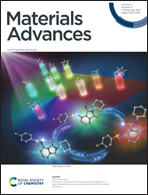Exotic physical properties of 2D materials modulated by moiré superlattices
Abstract
van der Waals heterostructures of two-dimensional materials are naturally endowed with the nanoscale moiré pattern, which has become a versatile platform for studying novel quantum phenomena during the past few decades. Here, we discussed the moiré superlattice combining graphene and hexagonal boron nitride (h-BN) which led to the observation of electronic minibands, superlattice Dirac points and anomalous physical phenomena such as the quantum Hall effect and the Hofstadter butterfly pattern. The twist bilayer graphene (TBG) system has witnessed the appearance of angle-dependent van Hove singularities. Moreover, in the magic-angle twisted bilayer graphene (MATBG), there is a superconductor–insulator transition due to the enhancement of van der Waals forces by interlayer resonant conditions. Besides, owing to the moiré superlattice constant being comparable to the Bohr radius of excitons, exciton physics dominated by the moiré potential for the heterojunction based on transition metal dichalcogenide (TMD) monolayers has attracted extensive attention. This review mainly covers the exotic physical properties, ranging from electronic structures to excitonic properties of graphene-based and TMD-based van der Waals-coupled twistronic materials, and discusses the remaining unsolved strongly correlated questions and possible expected semiconductor device applications in the quantum matter world.



 Please wait while we load your content...
Please wait while we load your content...